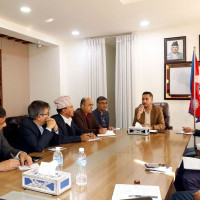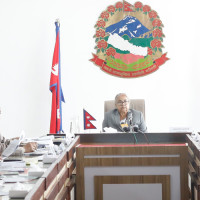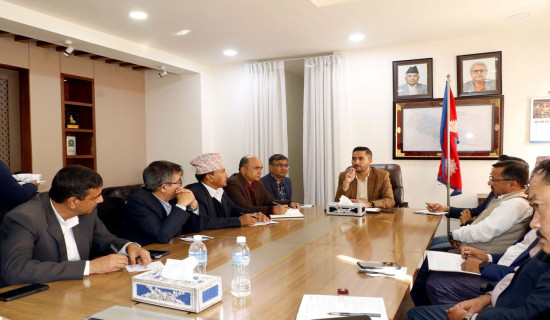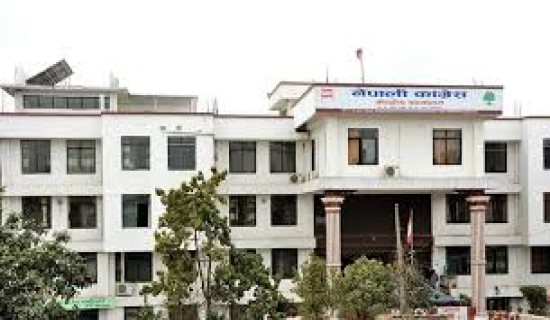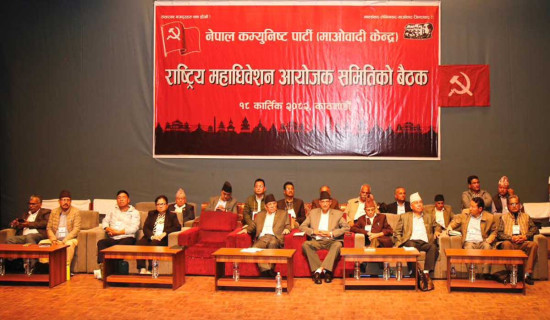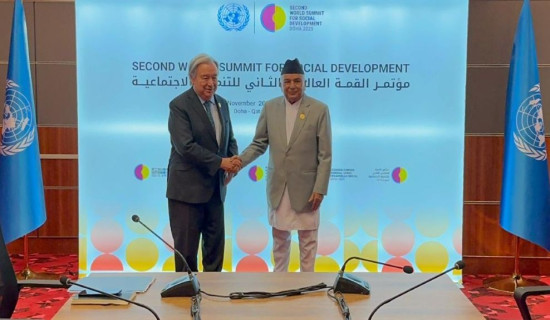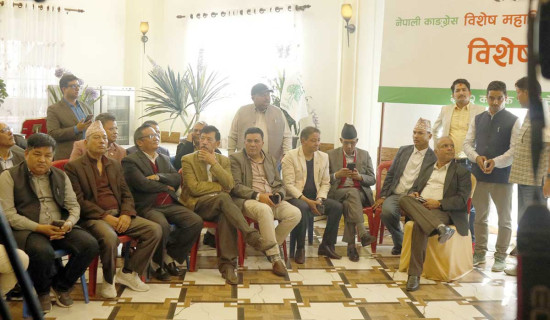- Wednesday, 5 November 2025
A book to address caste curiosity of kids
By Aashish Mishra
Kathmandu, Apr. 15: Utsukta and her classmate have all the same answers in their exam, because the latter copied off her. Yet, the friend stands first and she stands second. Utsukta is hurt. Shouldn’t teachers be able to tell who copied from whom?
Never mind. Second place is not bad either. But Utsukta cannot feel so looking at the face of her principal. She was visibly ecstatic while awarding Utskuta’s classmate but lost all her glee when Utsukta came on the stage for her prize.
“Why the unfairness? Why the different behaviour?” Utsukta first asks herself and then her mother these questions albeit with different words. In answering them, her mother uses the phrase “those who are like us.”
“That phrase ‘those who are like us’ leads the child to ponder who she is to get treated like that. The answer – she is a Dalit,” said Sarita Pariyar, author of the children’s book ‘Utsukta.’
Through the book’s fictionalised main character of the same name, Pariyar provides a glimpse into the very real lived experiences of the Dalit community. “Whether overtly or covertly, consciously or subconsciously, our society ignores and undermines the equality of fellow human beings.”
“The view is that Dalits are people who are only worth the tails of slain animals,” Pariyar said, referencing to a Nepali custom where when an animal is slaughtered in a locality, the tail, hooves and other parts that the supposed upper-castes do not want are “left” for the Dalits to have. “This is how the larger society views Dalit potential.”
The notion that Utsukta could write better than her classmates was so unfathomable and inconceivable to her teachers that they flat out refused to accept it and chose to award the other student whose answers were no different from her.
Through the book, illustrated by Rupak Raj Sunuwar and published by Srijanalaya in collaboration with The Asia Foundation’s Let’s Read initiative, Pariyar also lays bare the hypocrisies we, as a people, seem to have normalised. The character Pantheni Bajai gives off a nauseatingly strong stench of raw milk and cow dung. Still, she is the one who scolds neat and clean Utsukta to not come near and sprinkles gold-purified water on the clothes her mother sews for her.
This is something we see all around us and yet choose not to engage with, said Pariyar. “We are fearful of conversations about caste and caste issues, we treat it as taboo.”
“But children are innocent and curious (Utsukta means curiosity) and ask tough questions that demand candid answers.”
‘Utsukta’ is such an answer. But it’s not an objective all-encompassing statement; far from it. This book was born out of a very personal need when her six-year-old daughter asked hard questions about caste-based violence in 2015.
“She wanted to know what caste was and why people segregated people based on something as arbitrary as names and occupations,” Pariyar said. “And when I looked for reference materials to have that conversation with her, I found none.”
The issue of caste and casteism is hardly covered by the school curriculum, Pariyar claimed, nor is there extra-curricular literature available in the market. She visited bookstores in search of relevant publications but they told her that they did not have such books
“I felt that other children also would have the same queries my daughter had. That is what drove me to write this book,” she said.
“‘Utsukta’ came from my daughter’s curiosity.”
The target audience for this book is children, Dalit and non-Dalit alike, ranging in age from 10 to 15 years, according to Pariyar.
But why? Why do children need to learn about caste at all?
Is it an issue that requires formal literature? Yes, stressed Pariyar, because, “Caste is not past. It is very much present amid us, around us, affecting the lives of countless individuals, Dalits and non-Dalits alike.
“So, it is crucial for kids to be engaged with the social realities and be allowed to develop an understanding of this issue for them to understand the society they inhabit and sense the lived experiences of their peers.”
And the readers could not agree more. Reviews for the book published in various media outlets have been largely positive. Dalit children have themselves come forward to say that it brings to light the discrimination they face in their daily lives. Madhesi Dalit women that Pariyar is working with as part of an initiative directly related to the book have said that it provides an empathetic language to their plight. Also, they have been inspired to explore writing to articulate their own experiences.




